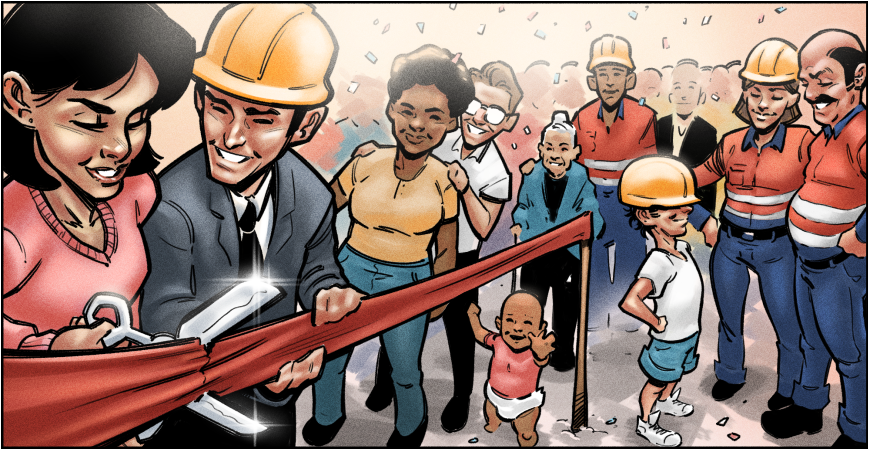The freight industry is critical to our economy, and our reliance on efficient logistics has never been more evident. But as our reliance on freight increases, so does the need for road, rail, ports and other infrastructure – potentially resulting in community pressure on all levels of government to impose restrictions on freight operations.
The road industry has recognised this threat and, through its peak body Austroads, commissioned Level 5 Design in collaboration with CGM to develop a best-practice approach to road freight and communities. The model developed looks at ways to work with community stakeholders to understand their concerns, and then to engage with the community around the significance and value of freight.
What we found through an analysis of case studies and extensive research of the literature was that the community’s tacit agreement for the freight industry to operate was critical and relied on an unwritten agreement between community and industry, in which communities support projects if they confer local and broader benefits, also known as a ‘social licence to operate’.
CGM used our understanding of social licence, refined through our extensive public campaign experience, and the IAP2 approach to engagement to develop a roadmap for building community acceptance and support for road, freight and infrastructure projects that could be catered to a state, regional and local audience.
The objectives of these campaigns were to raise awareness of the importance of an efficient freight industry to the broader economy, and to develop an understanding of how this improved the quality of life for individuals and communities.
Of course, all communities potentially impacted by infrastructure projects now have convenient access to project information through the internet, resulting in heightened awareness of how these projects may affect them. Social media provides a medium for concerned stakeholders to connect, form interest groups and mobilise against projects. This also provides the ability for people directly affected by a project to mobilise support outside of their geographical area and communities. According to a PwC report, a lack of understanding of digital culture and engagement is the biggest challenge for the industry.
Consider the “Rethink the Link” movement in opposition to Roe 8. This movement used online campaigning and environmental messaging to mobilise opposition well beyond the local community. Numerous protest groups mobilised to oppose the project, and the campaign was successful at pushing opposition for the project onto the state political agenda.
At the core of our proposed approach is genuine engagement. Any proposed local infrastructure project should first involve engaging with local constituents and audiences to understand their issues, identify opportunities, and address matters that emerge.
It is not just about listening, governments should be prepared to consider adjusting the scope or details of a project in response to identified community concerns. The CGM model also outlines a process to identify and involve stakeholders in message testing and content, to ensure communication has support and buy-in from the community.
Using our model, the resultant campaign should provide a suite of options that best works with the relevant community to communicate the importance of freight and how it addresses the specific concerns of that community.
CGM believes this best-practice model has the flexibility to be used for effective communication and community engagement campaigns for a range of infrastructure projects – not just roads.
Our complete report is available on the Austroads website.
Please note that an interactive webinar is scheduled for 10am, Thursday November 26. Please sign up by following this link Webinar: Best-Practice Approaches to Road Freight and Communities.
 ReGen Strategic
ReGen Strategic